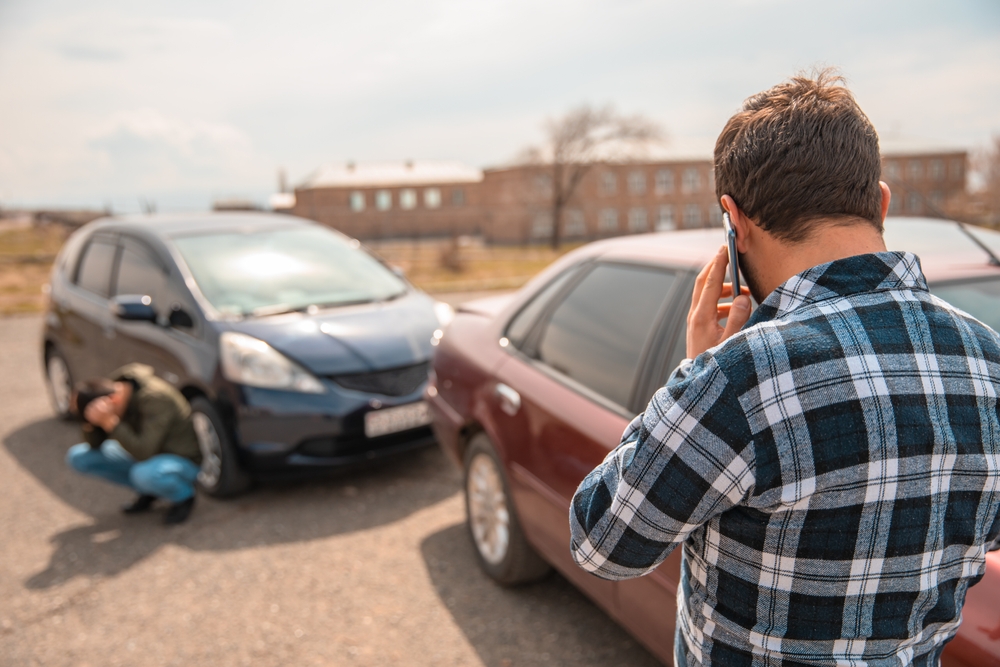Motorcyclists face unique risks on the road. Unfortunately, accidents involving distracted drivers can lead to devastating consequences. Filing a claim in such cases can be complex. Recovering compensation may require a clear understanding of the law, the steps involved, and the importance of evidence.
At Manchin Ferretti Injury Law, we’ve seen firsthand how distracted driving impacts victims. We’re here to help you navigate the legal process going forward.
The Impact of Distracted Driving on Motorcycle Accidents
What Is Distracted Driving?
Distracted driving involves a motorist engaging in any activity that diverts their attention from the road. Common examples include:
- Texting or talking on a phone
- Adjusting the GPS or car controls
- Eating, drinking, or interacting with passengers
Distracted drivers have slower reaction times and reduced awareness than other motorists. They are also more likely to make errors. This increases the danger for motorcyclists, who are already less visible than cars.
“According to the National Highway Traffic Safety Administration (NHTSA), distracted driving claimed 3,142 lives in 2020, and motorcyclists are among the most vulnerable road users.”
Relevant Laws in West Virginia
In West Virginia, using a handheld device while driving is illegal.
- W.Va. Code § 17C-14-15 prohibits texting while driving.
- Fines range from $100 for first-time offenses to $300 for repeat violations.
Understanding these laws can strengthen your claim. If you can prove the at-fault driver violated them, proving negligence may be relatively easy.

Steps to Take After a Motorcycle Accident with a Distracted Driver
Immediate Actions
- Ensure Safety
Move to a safe area, if possible, and check for injuries. Call 911 immediately.
- Document the Scene
Take photos of the accident scene, road conditions, and your injuries. Capture anything that suggests distracted driving may have occurred. Even a phone in the hand of the other driver could indicate distraction.
- Talk to Witnesses
Collect statements and contact information from witnesses. Their testimony can help establish how an accident happened.
Post-Accident Steps
- Seek Medical Attention
Even seemingly minor injuries can require medical attention. Additionally, medical bills will play a critical role in your claim.
- File a Police Report
Law enforcement will document the accident. They may note distracted behavior when doing so.
- Consult an Attorney
A legal expert can help you gather evidence and build a strong case.
Filing a Claim Against a Distracted Driver
Proving Negligence
Winning your case requires proving your accident resulted from another driver’s negligence. Distracted driving is a transparent form of negligence. Evidence can include:
- Police Reports: Officers may note signs of distraction, such as texting.
- Eyewitness Accounts: Witnesses can confirm the driver’s behavior before the crash.
- Phone Records: These can prove the driver used their phone during the accident.
Understanding West Virginia’s Comparative Negligence Rule
West Virginia follows a modified comparative negligence system.
- You can recover damages if you are less than 51% at fault.
- Your percentage of fault reduces your compensation.
Example of How Comparative Negligence Works
| Fault Percentage | Claim Value | Compensation Awarded |
| 0% (You’re not at fault) | $100,000 | $100,000 |
| 10% (Minor shared fault) | $100,000 | $90,000 |
| 40% (Significant shared fault) | $100,000 | $60,000 |
| 51% or more (Above the threshold) | $100,000 | $0 |
Maximizing Compensation for Your Motorcycle Accident Claim
Types of Damages You Can Recover
- Economic Damages
- Medical bills and rehabilitation costs
- Lost wages and loss of earning capacity
- Property damage to your motorcycle
- Non-Economic Damages
- Pain and suffering
- Emotional distress
- Loss of enjoyment of life
- Punitive Damages
In rare cases, you may be eligible for punitive damages if the driver’s behavior was particularly reckless. A jury may award punitive damages if your case goes to trial.
“Insurance companies often undervalue motorcycle accident claims, especially when distracted driving is involved. Legal representation is key to securing a fair settlement.”

How an Attorney Can Help
An experienced attorney can:
- Collect and preserve evidence.
- Negotiate with insurance companies.
- Represent you in court, if necessary.
At Manchin Ferretti Injury Law, our team has extensive experience handling motorcycle accident cases. We work hard to ensure our clients receive the compensation they deserve.
Frequently Asked Questions
What qualifies as distracted driving?
Distracted driving includes texting, using a GPS, eating, or any other activity that takes the driver’s focus off the road.
How long do I have to file a claim in West Virginia?
The statute of limitations is two years from the date of the accident. You’ll lose the right to sue for compensation if you don’t file a lawsuit by the deadline.
Can I still recover damages if I’m partially at fault?
If your fault is less than 51%, you can recover damages under West Virginia’s comparative negligence law.
What if the distracted driver denies being at fault?
Your attorney can use evidence like phone records and eyewitness statements to prove negligence.
What should I do if the insurance company offers a low settlement?
Consult an attorney. They can negotiate on your behalf or file a lawsuit to ensure you’re fairly compensated.
Get Help Filing a Claim After a Motorcycle Accident with a Distracted Driver
Distracted driving is a severe issue endangering everyone on the road, especially motorcyclists. If you’ve been injured in an accident with a distracted driver, acting quickly and taking the proper steps to protect your claim is crucial.
At Manchin Ferretti Injury Law, we understand motorcycle accident victims’ challenges. With our help, you can build a strong case and focus on recovery while we handle the legal complexities.
If you’re ready to take the next step, consult our team to learn how we can support your motorcycle accident claim. Let us help you seek the justice and compensation you deserve.
Legal Resources





